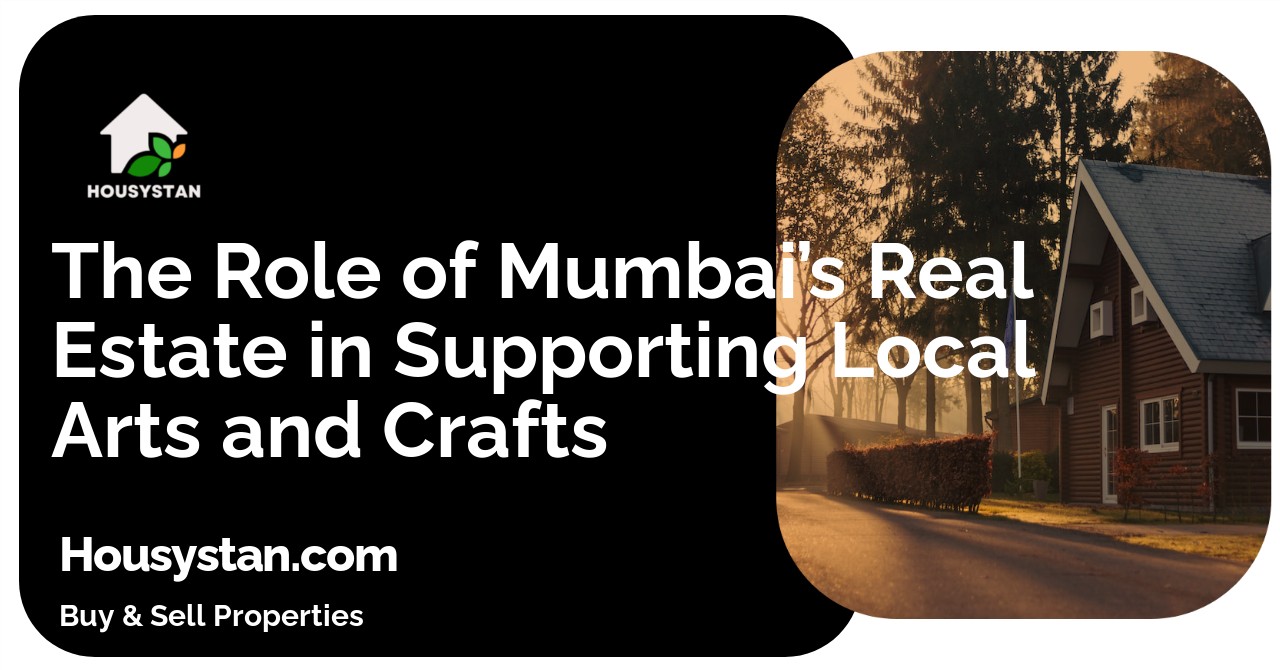The Role of Mumbai’s Real Estate in Supporting Local Arts and Crafts
Read latest blogs and articles from Housystan

The Information mentioned here was last updated on:
28/12/2025The Role of Mumbai’s Real Estate in Supporting Local Arts and Crafts
Mumbai, renowned as India’s financial capital, is not only a hub for business and commerce but also a vibrant center for culture and creativity. The city’s dynamic real estate sector has become an essential pillar in nurturing and promoting local arts and crafts, giving artisans and traditional craftsmen newfound opportunities to thrive. As urban landscapes evolve, Mumbai’s real estate developers and property owners are increasingly recognizing the value of integrating local heritage into modern infrastructure.
Many new commercial complexes, residential towers, and mixed-use developments in Mumbai now feature dedicated spaces for art galleries, craft exhibitions, and artisan workshops. These thoughtfully designed venues provide local artists with valuable platforms to display their work, connect with potential buyers, and collaborate with interior designers and architects. In areas like Colaba, Bandra, and Lower Parel, real estate projects frequently commission murals, sculptures, and installations from local talents, transforming public spaces into living galleries that celebrate Mumbai’s artistic legacy.
- Verified Tenants/Buyers
- Unlimited Property Listing
- Zero subscription/charges fee
Moreover, the city’s real estate initiatives have played a pivotal role in revitalizing art districts and preserving historical neighborhoods. By restoring heritage buildings and repurposing old warehouses into creative hubs, Mumbai is ensuring that traditional crafts such as Warli painting, pottery, textile weaving, and bamboo artistry continue to flourish. These efforts not only safeguard the city’s cultural identity but also attract tourists, art collectors, and global investors, boosting the local economy.
Additionally, real estate-driven art festivals, pop-up markets, and craft fairs have become regular features in Mumbai’s calendar, drawing attention to local talent and generating sustainable livelihoods for artisans. Property developers partner with NGOs and art organizations to offer workshops, training programs, and scholarships, empowering the next generation of artists. By fostering collaboration between real estate professionals and the arts community, Mumbai is setting a benchmark for inclusive urban development that balances economic growth with cultural enrichment.
Ultimately, Mumbai’s real estate industry is playing a transformative role in supporting local arts and crafts. Through innovative spaces, heritage preservation, and community engagement, the city is ensuring that its rich artistic traditions remain integral to its identity while paving the way for a creative and prosperous future.